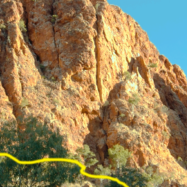This work is a meditation on death as an ephemeral and transfigurative moment. After losing my mother a year ago, I experienced a shift in a fundamental body frequency to respond and process loss.
This piece is demarcated into 4 states of loss as we are drawn out across them to imagine this both from the one dying and to the one who mourns. As we transfigure, we trans, “move across,” figure “form, shape, a figure of speech”.
I am therefore playing in-between these states, to explore dissonance that arises from this process through memory and reflecting on how we respond somatically as our internal landscapes change.
What arises are questions of transitory space, as you move from state to another, as you are transposed, what is left: a memory? a voice? or a frequency?
Eitan Ritz is an artist, dancer and composer exploring bodies and space as sites of congealment. His interests centre around how we foment a sense of home through daily circadian rhythms. He sees the body as the site of these processes and looks to explore its potential for proprioception. This interest is in part indebted to growing up in a Jewish household where diasporic thinking has played a crucial role in how Ritz relates to space. His family constantly had to re-create a sense of home since fleeing Europe and adapting to life in various cultures, until finally settling in Australia.
Ritz completed his Bachelor’s in Fine Arts (Visual Arts) at the Victorian College of the Arts in 2014, where he first began to consider the body and the everyday as sites of exploration and creation. This led him to spend 2016 studying the dance compositions of Noa Eshkol through the Eshkol-Wachmann (EW) Movement Notation in Israel. There, Ritz gained an introspection into the moving body and developed a fascination with the role of language within. This interest convinced him to study a Master’s in Applied Linguistics in 2018, through which he could re-contextualise dance and sound from the lens of language.
Throughout his time with GlogauAIR, Ritz has worked to draw out all these threads: the body, language and sound — to explore what locates and dis-locates his sense of home. He has been excited by how our sounds and gestures are a subconscious embodiment of space which situates us in both abstract space and a historically contingent landscape.

